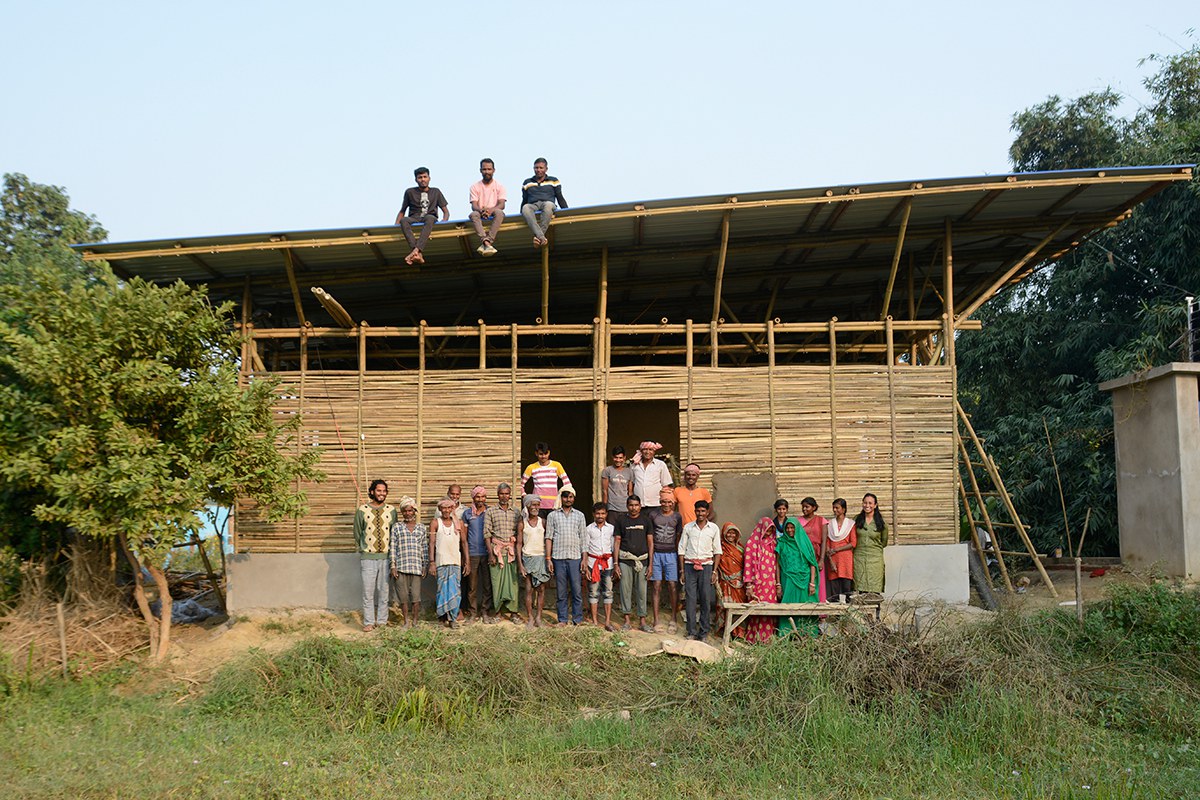It all began in the summer semester of 2019, when Isha and Daniel Haselsberger came to Bangladesh as part of a studio with Anna Heringer. When the studio project planned there ultimately fell through, the two founded a non-profit association in 2020, with the help of which they created a meeting place in Bangladesh in the fall of 2021. But they didn't stop there, Isha and Daniel Haselsberger already had their sights set on a next project in Bahuarwa, a rural town in the Indian state of Bihar.
In spring 2022, they started working with a local NGO that helps children and young people from the Dalit, a social class that is excluded from the caste system. These children are denied access to education, as public schools often do not function, especially in remote regions, and parents are unable to afford private education. Daniel and Isha Haselsberger decided to help set up a school that would offer young people a free education, while the local NGO would run the school. In February 2023, the planning was carried out with local stakeholders and the construction was financed by private donors and Liechtenstein foundations.
Traditionally, clay, bamboo and straw were used for construction in the region, but these building materials are increasingly perceived as outdated and stigmatizing for the Dalit population and are often abandoned in favour of bricks, cement and concrete. Daniel Haselsberger's dissertation deals with the social acceptance of building materials in the Bahuarwa region. He examines the reasons for the abandonment of traditional building methods using clay, bamboo and straw on the one hand, and the way in which the local population adopts new building methods using fired bricks, cement and concrete on the other.
On this basis, he tries to draw conclusions about how traditional and new construction methods could be combined. At the end of September 2023, Daniel and Isha Haselsberger traveled to India for three months to tackle the construction of the new school. The construction allowed the desired hybrid solution of traditional and modern construction methods to be tested in practice and thus also played a central role in the research.
The foundations of the school were built with burnt bricks from the village, while the supporting structure was made of bamboo. The interior walls were lined with clay and the exterior walls were plastered with cement. More than 20 helpers from the village were involved in the construction process. These included many parents and grandparents of the children who will be using the school. Three experts in contemporary bamboo construction from the state of Gujarat supervised the bamboo work and showed the local population new techniques. The wood for the windows, doors, tables and benches was also felled in the immediate vicinity and the building was largely completed after just three months. A photovoltaic system and some carpentry work are still missing, but the school for over 150 children can already start operating at the beginning of February 2024. Next fall, Isha and Daniel Haselsberger will travel to Bahuarwa once again to put the finishing touches to the school together with the children and with the help of paint and clay.
Daniel Haselsberger explains: "Research takes shape through building. It becomes tangible for the target groups. There are a variety of conversations with planners, craftspeople and users, which are continued and recorded in the form of ethnographic surveys. In the sense of research by design (PhD by Design), the school building thus serves as a method. However, it fulfils another, equally relevant purpose: with the aim of decolonizing research in contexts of the Global South, I understand research as cooperation, rather than as a one-sided extraction of data that results in publications and conference papers, but leaves no added value for those affected. The school building is intended to create a fair exchange and ultimately real added value for the target group."










